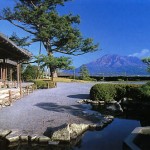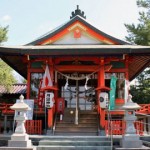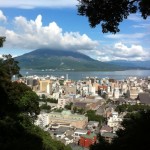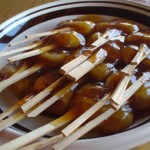“Doyo (土用)” is the period of 18 days before the first day of spring according to the traditional lunisolar calendar (approx. Feb. 4), the first day of summer (approx. May. 6), the first day of autumn (approx. Aug. 8) and the first day of winter (approx. Nov. 8), and it is the change of seasons.
*For more information about Doyo, please click here.
********* Contents ********
What is “Doyo-no Ushi-no Hi (土用丑の日)”
Why Do Japanese People eat eels on this day?
Not Only Eels for Food on This Day
Food Starting with “U”
Food Name with “Doyo”
Have A Cheery Summer!
What is “Doyo-no Ushi-no Hi (土用丑の日)”
“Ushi-no Hi (丑の日)” is the day of the ox, and this day comes in a 12-day cycle.
“Doyo-no Ushi-no Hi (土用丑の日)” is the ox day during the Doyo(土用) period, and this Summer, July 30th is the “Doyo-no Ushi-no Hi”.
Japanese people tend to associate the “Doyo-no Ushi-no Hi (土用の丑の日), especially in Summer with eating eels.
Why Do Japanese People eat eels on this day?
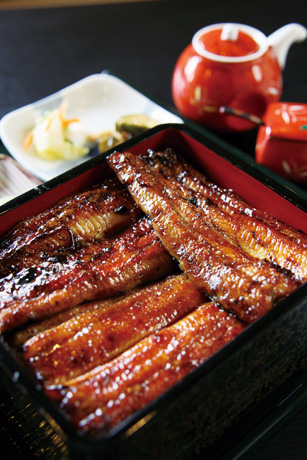
Generally speaking, the Ox day during doyo indicates the summer occurrence. It is extremely hot around this time, so on this day, people eat eels to keep up their stamina.
This custom started in the Edo period. Somebody (there are several opinions as to who it was, but Gennai Hiraga / 平賀源内, who was a doctor in the Edo period, is the most likely) said that it is good to eat eels (unagi / うなぎ) on this day for the benefit of an unpopular eel shop. Then, people started to eat eels.
Now, all the supermarkets sell more eels than usual on this day.
Not Only Eels for Food on This Day
Food Starting with “U”
Japanese annual events and eating something that has a letter related to the event or the date in its name is quite common.
People eat some food with a letter “n (ん)” such as “daikon (Japanese radish)”, “ninjin(carrot)”, “nankin another name for kabocha (pumpkin)” on the day of the winter solstice, because “n” is the last character in the hiragana alphabet order. Since it is “the end of hiragana”, people gave it the same meaning as the day of “touji (the winter solstice).
How does this apply to the day of “Doyo-no Ushi-no Hi”?
Since a long time ago, it is said that if you eat food startING with “U (う)” on this day, you don’t get sick.
Popular foods include Kyuri (cucumber), suika (watermelon), kabocha (pumpkin), and nigauri (bitter melon)…. They don’t start with “U”? No, they do not, but they are all categorized in the (Cucurbitaceae), gourd family, which is “Uri” in Japanese.
Also, umeboshi (pickled plum), and udon (udon noodles) are foods people eat on this day.
Eating food because of the name sounds like a joke, but this day is around the hottest period of the year, and these foods above are easy to eat when you have no appetite because of the heat. This is strand of ancient wisdom.
Food Name with “Doyo”
“Doyo-mochi”, “Doyo-shijimi” and “Doyo-tamago”. These are the foods that have “doyo” in their names, and people say that they are good for your health during the doyo period.
DOYO-MOCHI (土用餅)
“DOYO-MOCHI” is mochi wrapped with sweet bean jam, eaten in the doyo period. They are eaten in Kansai and Hokuriku areas such as Kyoto, Kanazawa, Shiga, and Fukui.
A long time ago, in the imperial court, people used to eat miso soup with mochi at the beginning of the doyo period to prevent heat-stroke. This was made with broth of rough potato leaves.
In the middle of the Edo period, people started to eat mochi wrapped with sweet bean jam, and it became “DOYO-MOCHI”.
It is said that azuki beans, the main ingredient of sweet been jam, ward off bad spirits. Also, mochi has a high nutritive value. So, if you eat “DOYO-MOCHI”, you can prevent heat-stroke, and ward off bad spirits, and hopefully spend a healthy summer.
DOYO-SHIJIMI (土用しじみ)
“Shijimi” are freshwater mussels.
In the Edo period, the custom of eating freshwater mussels at the beginning of the doyo period was fixed among commoners.
It is the season right before the freshwater mussel, laying period, so it is delicious and nutritious. It has the effect of controlling intestinal function as well.
Eating freshwater mussels in this season was one of the ancestors’ wisdom to get through the Japanese intense summer heat.
DOYO-TAMAGO (土用卵)
“DOYO-TAMAGO” are the eggs laid during the doyo period.
Eat nutritious eggs at the change of season and keep healthy!
Have A Cheery Summer!
Eating food starting with “u” and “doyo” sounds like a superstition, but it is the ancestors’ wisdom for staying healthy in the hot summer.
Use their wisdom and eat good food to get through the severe heat!
Category : 24 Divisions of The Solar Year , Japanese Culture , text @en
Tag : 24 divisions of the solar year , 24sekki , corona virus , COVID-19 , COVID19 , Emergency , Japanese culture , season , tanabata , The coronavirus , 日本の文化







